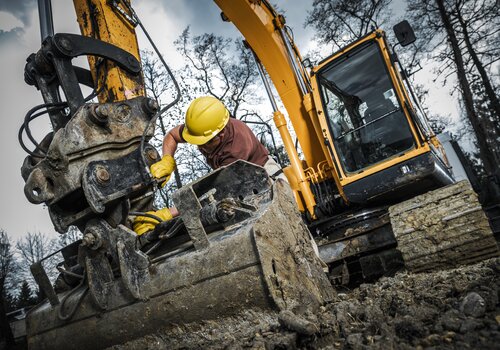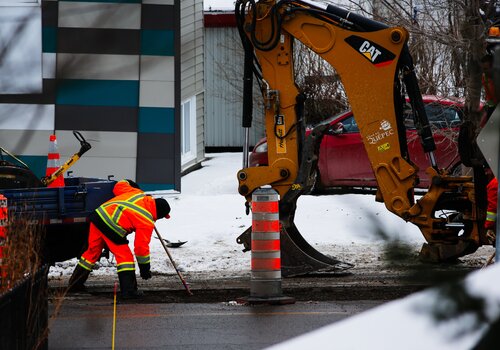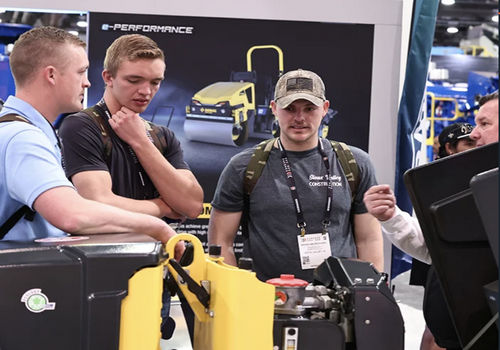Boom truck manufacturers have continued to narrow the performance gap between boom trucks and other types of larger cranes. While a boom truck may still have its limitations, it is stronger and more capable than ever before. Furthermore, continuous improvement with respect to safety and operator comfort has continued to propel boom trucks toward the top of a general contractor’s wish list.
Even before recent product advancements, the typical construction company could benefit in many ways from using a boom truck.
First, a boom truck is mounted on a commercial chassis. That chassis provides several advantages including easier transport to the jobsite and quicker set up on the jobsite. As a result, boom trucks enable contractors to perform multiple jobs on multiple projects in a single day.
“With a bigger crane and a more purpose-built chassis, everything has to be planned out a lot more,” says Bob Ritter, Product Engineering Manager at National Crane, a leading provider of boom trucks. Ritter is talking about the need for permitting, etc. related to transporting larger cranes to jobsites. Because a boom truck is mounted on a commercial chassis, it can legally travel on the road at highway speeds.
“Once at the jobsite, the setup of a larger crane can be a little more time-consuming,” Ritter adds. “It’s just a much bigger piece of equipment with more components. Boom trucks, on the other hand, are smaller and easier to operate.”
Most boom trucks do require the operator to have a CDL. For rental and construction companies in need of boom truck operators, finding someone with a CDL is well over half the battle. “If a person has a CDL, it’s likely they have an affinity for running bigger equipment,” Ritter says. “Training that person to become a crane operator is fairly straightforward at that point.”
Stand-up vs swing cab boom trucks
There are two general types of boom trucks: stand-up and swing cab (aka swing seat). Swing cab boom trucks have been gaining favor over the past several years for many reasons. But that doesn’t mean the more traditional stand-up style has lost relevance.
With a stand-up boom truck, the crane controls are located behind the cab at the back of the chassis. “Stand-up booms are rather simplistic in their design and are more of an entry-level crane,” Ritter points out.
One advantage of a stand-up boom truck is that materials can be hauled on the flat deck behind the crane controls. This capability lends itself well to tasks such as air conditioner and transformer installations as well as commercial roofing. A stand-up boom truck can handle both the hauling and setting which increases efficiency and reduces cost.
Swing cab boom trucks, on the other hand, can be a more productive option when material hauling isn’t necessary. Swing cabs can handle more weight, generally lifting 30 U.S. tons and above whereas stand-up cranes are generally 30-35 U.S. tons and below. Also, as their name implies, swing cabs rotate with the boom, providing an ergonomic advantage for operators needing to maintain visibility of the load as it is lifted.
Another advantage of swing cabs relates to operator comfort. First, the crane operator is now sitting down as opposed to standing up all day. Secondly, the cab keeps operators out of the rain and snow and are oftentimes temperature controlled.
According to Ritter, swing cabs have been gaining popularity for quite a while, and the pace of adoption has really picked up over the past five years or so.
“Swing cab machines are smaller, more mobile versions of truck cranes and rough-terrain cranes,” Ritter explains. To that point, a swing cab boom truck can often compete with larger cranes on certain types of projects — to a certain degree.
National Crane is part of the Manitowoc family of brands. Another Manitowoc brand, Grove, offers a line of truck-mounted cranes ranging from 40 to 115 U.S. tons and roughly 128- to 263-foot max tip height. Grove’s rough-terrain cranes range from 30 to 165 U.S. tons and 146- to 299-foot max tip height.
National Crane’s NBT60XL swing cab boom truck fits right into a sweet spot. It has a 60-U.S. tons capacity, 151-foot boom, and 202-foot max tip height — all while maintaining the compact envelope, jobsite maneuverability, and highway-capable features that make a boom truck such a versatile option in the first place. A 36-foot lattice jib is also available when additional reach is required.
Advancements in capacity, comfort, and technology
As interest in swing cab boom trucks has picked up over the past several years, so has the pace of innovation.
Manufacturers like National Crane are constantly striving to further narrow the gap between boom trucks and purpose-built truck cranes. Increasing lifting capacity with the same GVW (gross vehicle weight) and vehicle length is the ultimate goal. Improvements in outrigger configurations and jack stroke have definitely helped.
Other innovative developments have also enhanced the performance of swing cab boom trucks. For example, National Crane has begun to offer swing cabs that tilt, similar to a larger truck crane or all-terrain crane. “The cab tilts up to 20° so the operator can have a better line of sight to the boom,” Ritter explains. “As these machines get larger, the booms get longer. By being able to lean back, the operator does not have to put strain on their neck.”
National Crane’s NBT60XL swing cab crane is essentially a hybrid between a boom truck and a truck crane. Like a truck crane, it features a counterweight to allow for increased lifting capacity. Furthermore, the 16,000 lbs. of counterweight are broken down into several slabs. The slabs are hydraulically removable which allows the operator to manipulate the weight in order to comply with various roading regulations that may come into play.
Swing cab boom trucks have also started to mimic truck cranes with respect to operator features. Along with the aforementioned removable counterweight slabs, some swing cabs feature remote controls that can operate both the crane and outrigger functions. “Then the operator can easily walk around the jobsite and watch where they are setting their outriggers up,” Ritter explains. “This improves jobsite visibility.”
Also on the topic of visibility, cameras help operators maintain a view of the hoist as well as the rear of the boom truck. Again, this is a feature that has been common on truck cranes for a long time but is now finding its way to swing cab boom trucks.
Other new features are helping boom truck operators take jobsite awareness to another level. Wind speed indicators are a great example. Another recent development relates to the RCL, or rated capacity limiter system. Ritter likens the RCL system to being the brains of a crane, determining what the capacities are at different boom lengths, boom angles, and radii. As the typical RCL system has evolved, the technology and user interface have also improved.
“We now have more functionality on the display of the crane to adjust different parameters,” Ritter says. “That’s easier on the operator and saves time. We want our customers to be able to adjust their machines and also troubleshoot common issues without having to hook up to a laptop.”
As companies like National Crane think about the future of boom trucks, technology will continue to play a beneficial role. Telematics, connectivity, and the Internet of Things (IoT) have already been impacting other types of construction equipment.
“We’re starting to see telematics being incorporated more on larger cranes,” Ritter says. “There is a real benefit to having a better understanding of things like asset utilization and preventive maintenance, especially if you’re a rental company. Over the next decade, that technology should begin to trickle down to boom trucks, as well.”
As that technology trickles down, along with other innovations and engineering enhancements, the gap between boom trucks and their larger craning counterparts will only continue to narrow.
READ NEXT
Hoist, Pump, Pour - Your Best Option for Placing Concrete High Up












